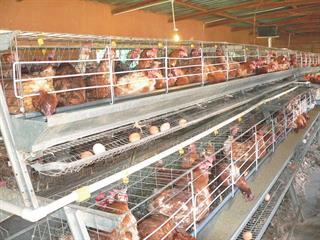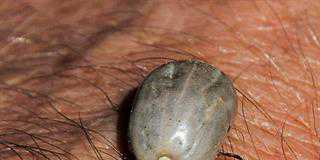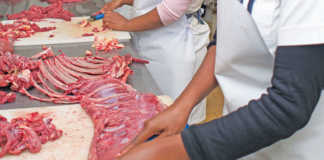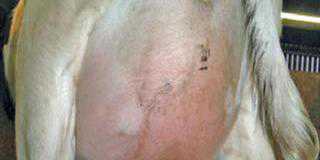
About 12 layer hens will lay at least nine to 10 eggs a day. You could sell four eggs to pay for the feed of the hens, leaving the family with five or six eggs per day. If the demand for eggs in your area is high, you could expand and sell more eggs.
Buying hens
You can buy day-old chicks and rear them, but this may be expensive and risky as some of them may die. It’s better to buy young hens (pullets), 18 to 19 weeks old and ready to lay eggs. These are called point-of-lay pullets. They must be of a very good quality and be fully vaccinated against poultry diseases.
The hens will start laying two to three weeks after being bought and at about 20 to 21 weeks old.
Keep the hens for a maximum of one year and then sell them as cull hens for slaughter. If you keep them longer, they will lay fewer eggs and then later stop altogether. You can sell a cull hen for about the same price as a replacement hen.
Maximising production
For hens to lay as many eggs as possible, they must have at least 16 hours of light every day. This is simple if you have electricity. Switch the lights on before sunrise and leave them on for a few hours after sunset.
Without electricity or any other source of artificial light, the hens will lay fewer eggs. If you want to maximise egg production but don’t have any electricity, place your cage where it will get the maximum natural light during the day.
With 16 hours of light every day, a good hen will lay about 280 eggs a year. Without extra light, she will still lay about 200 eggs a year.
Feeding layer hens
You must give the hens the best feed if you want them to lay well.
It’s best to buy a good commercial feed such as laying mash from the local farmer supply cooperative.
Make sure that feed is always available in the feed troughs, and the water must always be clean.
Smaller breeds will eat about 0,1kg of feed per day while larger breeds will eat a little more.
Source: Resource Centre, Department of Agriculture, Forestry and Fisheries.













